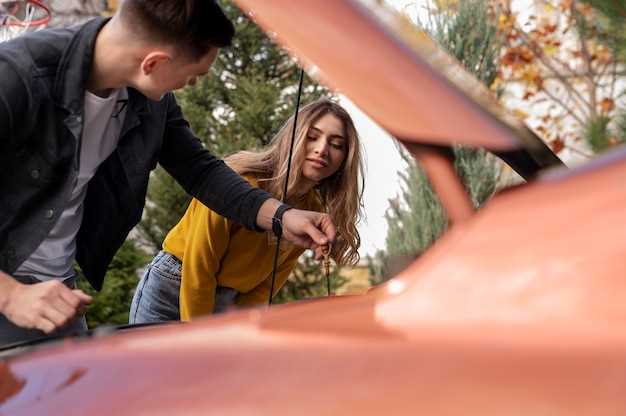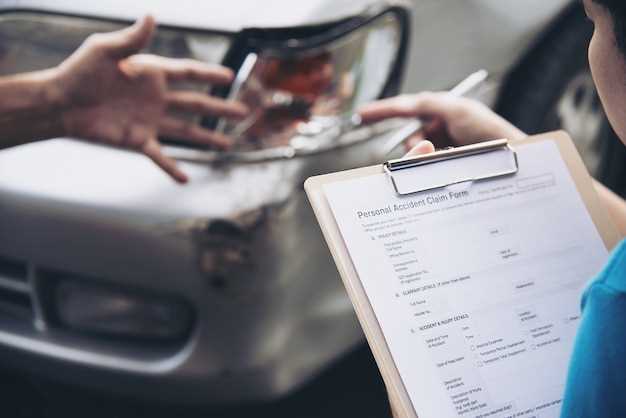
When it comes to protecting your classic car with adequate insurance, understanding its value is paramount. The Volkswagen Corrado, known for its unique design and engaging driving experience, has garnered a dedicated following among car enthusiasts. However, evaluating its worth, particularly after undergoing restoration, can be challenging yet essential for obtaining proper coverage.
Determining the value of your restored Corrado requires a comprehensive assessment of its current condition, the quality of the restoration, and market trends. Factors such as originality, mileage, and modifications play significant roles in defining its insurance value. Knowing these elements can help you negotiate with insurance providers to ensure that your classic car is suitably covered in the event of unforeseen circumstances.
Moreover, an accurate valuation not only secures your investment but also enhances your overall enjoyment of owning a restored classic. With the right approach, you can confidently protect your Corrado and appreciate its true worth in the collector car market.
Assessing the Market Value of Your Restored Corrado

Determining the market value of your restored Corrado is crucial for obtaining adequate insurance coverage. Here are some essential tips to help you accurately assess its value.
Firstly, research current market prices for similar models. Analyze listings on reputable websites and consult classic car valuation guides to find average prices for restored Corrados in your area. This will provide a baseline for what collectors and enthusiasts are willing to pay.
Next, consider the quality of your restoration. Factors such as paint condition, mechanical upgrades, and interior refinishing can significantly influence value. Document all restoration work with receipts and photographs, as these can enhance credibility when presenting to insurance companies.
Be aware of the rarity and demand for specific Corrado variants. Limited editions or models with unique features often fetch higher prices. Keep an eye on collector trends which can shift value unexpectedly.
Additionally, factor in the overall condition of your vehicle. A well-maintained car with low mileage will typically hold more value than one that has deteriorated. Regular maintenance records can also help justify a higher price point.
Finally, consider seeking a professional appraisal. Experienced appraisers can provide a detailed valuation report that will not only benefit you when negotiating insurance but also give you a clearer understanding of your car’s worth in today’s market.
By following these tips, you can ensure that you accurately reflect your restored Corrado’s value, securing proper insurance coverage and protecting your investment.
Understanding Classic Car Valuation Factors
Valuing a classic car, such as a restored Corrado, involves several key factors that can significantly influence its market value and insurance coverage. One essential aspect is the car’s condition. A vehicle in pristine, fully restored condition will typically command a higher price compared to one with minor wear and tear. Restoration quality, including the originality and craftsmanship of upgrades, plays a crucial role in valuation.
Rarity is another critical factor. Classic cars that were produced in limited quantities tend to have higher value due to their scarcity. The make and model also influence perceived value; some brands are more sought after by collectors, enhancing the car’s marketability. Documentation, including service history and restoration records, can add substantial value as it assures potential buyers of the car’s authenticity and care history.
The car’s provenance or history is equally important. A classic vehicle with a notable past or previous ownership by a prominent figure may be valued higher. Additionally, market trends impact valuation; classic cars can fluctuate in value based on demand and economic conditions.
When considering insurance, it is crucial to accurately assess these factors to ensure proper coverage. Consult with classic car experts or appraisers who can provide tailored tips for determining value, making sure that your insurance policy reflects the true worth of your valuable investment. This ensures you are adequately protected in case of unforeseen circumstances while maximizing the value of your restored Corrado.
Gathering Documentation for Insurance Appraisal
When preparing for an insurance appraisal of your restored Corrado, it is crucial to gather comprehensive documentation that establishes its value. This process will not only help in determining the proper insurance coverage but also in justifying the value of your vehicle in the event of a claim.
1. Service Records: Compile all service and maintenance records, including receipts for parts and labor. This documentation demonstrates your dedication to maintaining the vehicle in top condition, which can positively impact its value.
2. Restoration Documents: Include detailed records of the restoration process. This may involve photographs, invoices, and descriptions of the work completed. Highlighting the improvements made–such as engine upgrades or body restoration–can significantly enhance the perceived value.
3. Appraisal Records: If you have previously had the vehicle appraised, provide those records. An official appraisal from a reputable source serves as an authoritative reference point for your vehicle’s value.
4. Market Comparisons: Research and document comparable vehicles in similar condition and your model’s specificity. Gather data on sales prices from classic car auctions, online marketplaces, and classified ads to support your valuation.
5. Vehicle History: Prepare a report detailing the Corrado’s history, including previous ownership, any accidents, and its overall usage. A clean history can significantly raise its value, while any negative reports should be addressed with transparency.
6. Professional Photos: Take high-quality photographs of your vehicle from multiple angles, showcasing both the exterior and the interior. Highlight any unique features, modifications, or awards to enhance the presentation during the appraisal process.
By systematically gathering these documents, you’ll provide your insurance company with a solid foundation to assess the true value of your restored Corrado. This meticulous preparation will help ensure you receive adequate coverage tailored to your vehicle’s worth.
Choosing the Right Insurance Type for Classic Cars

When it comes to insuring your restored Corrado or any classic car, selecting the appropriate insurance type is critical for protecting your investment. Here are some valuable tips to help you choose the right coverage that reflects the unique value of your classic vehicle.
- Assess the Value: Determine the accurate market value of your classic car. This may require professional appraisals to ensure your coverage matches its worth.
- Consider Agreed Value Insurance: This type of policy sets a defined value for your car, agreed upon by both you and the insurer. In case of a total loss, you will receive the agreed amount without depreciation deductions.
- Look for Specialty Insurance Providers: Many insurance companies specialize in classic cars. They understand the nuances of valuing and insuring these vehicles, which may lead to better coverage options and rates.
- Review Usage Restrictions: Check if the policy has mileage limits or usage conditions. Classic cars often have restrictions on how they can be driven, impacting the type of coverage you may need.
- Liability Coverage: Ensure that you have adequate liability coverage to protect yourself in case of accidents. This is especially important as classic cars may attract higher repair costs due to their unique parts.
In conclusion, choosing the right insurance type for your classic car requires careful consideration of its value, the type of coverage that fits your needs, and the expertise of the insurance provider. By following these tips, you can ensure that you adequately protect your investment while enjoying your restored vehicle.
Common Pitfalls in Insuring Restored Vehicles
Insuring a restored vehicle, especially a classic one, often comes with unique challenges that can lead to significant pitfalls. Understanding these issues can help owners avoid costly mistakes and ensure their vehicle is adequately covered.
One of the main pitfalls is undervaluing the vehicle. Many owners may choose to insure their classic car for an amount that reflects only its market value, neglecting the extensive work and investment that went into its restoration. This can lead to insufficient coverage in the event of a total loss. Always seek a professional appraisal to determine the true value of your restored vehicle.
Another common mistake is failing to consider specific insurance policies tailored for classic cars. Standard auto insurance often does not account for the unique characteristics and value of a restored vehicle. Classic car insurance typically offers agreed value coverage, which allows you to set a value for your vehicle and receive that amount in the event of a claim. Failing to secure such a policy can result in disappointing settlements.
Owners should also be wary of mileage restrictions that often come with classic car insurance policies. While many vehicles are not daily drivers, it’s important to understand any mileage limitations and how they may impact coverage. Exceeding these limits could lead to denial of claims, which would be detrimental should an accident occur.
| Common Pitfalls | Description |
|---|---|
| Undervaluing the Vehicle | Insuring for less than restoration costs or true value can lead to inadequate coverage. |
| Ignoring Classic Car Policies | Standard insurance may not provide sufficient protection; seek policies designed for classic vehicles. |
| Not Considering Mileage Restrictions | Some policies have mileage limits that could affect coverage if exceeded. |
| Lack of Proper Documentation | Failing to maintain detailed records of restoration work and valuations can complicate claims. |
Lastly, documentation is crucial. Many owners overlook the importance of maintaining detailed records of restoration, including invoices, photographs, and appraisals. Lack of proper documentation can complicate claims and prove the vehicle’s value during disputes with insurance companies.
By understanding these common pitfalls, owners of restored classic vehicles can better navigate the complexities of insurance and ensure their investment is properly protected.
Maintaining Value: Best Practices for Classic Car Owners
Owning a classic car like the Corrado requires careful attention to ensure its value is preserved over time. Here are some effective tips for classic car owners looking to maintain and even enhance the worth of their beloved vehicles.
- Regular Maintenance: Schedule routine inspections and service for your car. This includes oil changes, brake checks, and fluid replacements. A well-maintained vehicle will retain its value better than one that has been neglected.
- Keep Documentation: Maintain a detailed history of repairs, restorations, and any modifications. Documenting your car’s history can significantly enhance its value when it comes time to sell.
- Storage Conditions: Store your classic car in a climate-controlled environment away from direct sunlight, humidity, and extreme temperatures. Proper storage prevents rust and paint damage, preserving the vehicle’s exterior and interior condition.
- Use Quality Parts: When repairs or restorations are needed, opt for high-quality or OEM (Original Equipment Manufacturer) parts. This dedication to quality contributes to long-term value retention.
- Limiting Mileage: Try to limit driving to special occasions. Lower mileage typically leads to a higher valuation since less wear and tear occurs over time.
- Insurance Considerations: Ensure you have an appropriate insurance policy for your classic car. A policy that reflects its true value can protect your investment against unforeseen incidents.
By implementing these best practices, classic car owners can successfully maintain and potentially increase the value of their vehicles. Regular care, thoughtful modifications, and meticulous documentation are key components to sustaining the value of your restored Corrado and other classic cars.












